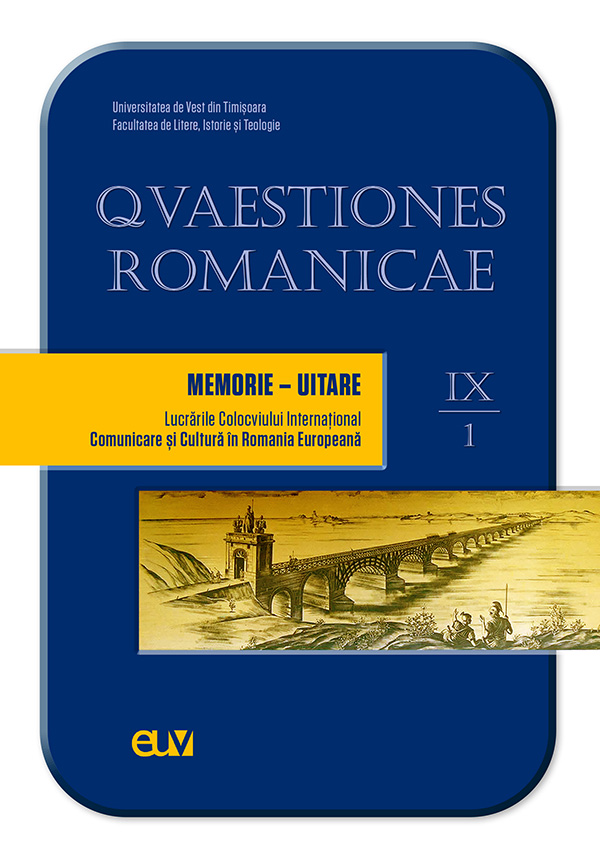Le Chronotope de la mémoire dans le conte Zulma deMadame de Staël
Abstract: (The chronotope of memoire illustrated in Madame de Staël’s short story Zulma) The theme of the study is the time-space of an infliction. The literary corpus: Zulma by Madame de Staël, a romantic tale from the first stage of Madame de Staël’s literary creation. Zulma is an episode of love that should have opened the essay The Influence of Passions on the Happiness of Individuals and Nations and served as an illustration. From an aesthetic point of view, this is early romantic writing. The working hypothesis: the writer intends to construct an affective literary geography and traces the temporal and spatial narrative axes that define later romanticism. Methodology: applying interpretative analysis of endogenous and exogenous chronotope to the short story text; psychoanalytic and thematic approaches with comparative ramifications. The critical benchmarks for our work: the emphasis falls on writing as a catharsis to heal the immense suffering caused by soul pain; the configuration of the female character Zulma according to the traits of early romanticism; the love-passion that gives life and death; the narrative pattern common to early staëlian writing: wilderness, a female character in love in spite of himself, love- passion, the male character’s departure for battle, meeting another woman, return without love, suicide (her) and death (him) (or vice-versa); the close relationship between narrative (basic literary gender) and theatre (hybridization).
Keywords: memory, short story Zulma, Madamede Staël, romanticism, chronotope.
Résumé : La thématique de l’étude est le temps-espace d’une infliction. Le corpus littéraire : Zulma de Madame de Staël, conte romantique de la première étape de la création littéraire staëlienne. Zulma est un épisode amoureux qui aurait dû ouvrir l’essai L’influence des passions sur le bonheur des individus et des nations et en servir d’illustration. Du point de vue esthétique, c’est une écriture trouvée à l’aube du romantisme. L’hypothèse de travail : l’écrivaine construit une géographie littéraire affective en retraçant des axes narratifs temporels et spatiaux qui définissent le romantisme de plus tard. La méthodologie : appliquer la grille interprétative du chronotope endogène et exogène au texte du conte ; démarches psychanalytique et thématique aux ramifications comparatistes. Les idées-clés de l’étude : l’accent tombe sur l’écriture comme état de catharsis afin de guérir les immenses souffrances causées par les troubles d’âme ; la configuration (avant la lettre) du personnage féminin Zulma selon les traits du romantisme naissant ; l’amour-passion déclencheur de vie et de mort ; le schéma narratif commun aux écritures staëliennes de jeunesse : cadre naturel sauvage, personnage féminin épris malgré lui, amour-passion, départ du personnage masculin au combat, rencontre d’une autre femme, retour sans amour, suicide (elle) et mort (lui) (ou bien vice-versa) ; le rapport étroit entre la narration (genre-souche) et le théâtre (hybridation).
Mots-clés : mémoire, conteZulma, Madame de Staël, romantisme, chronotope.
